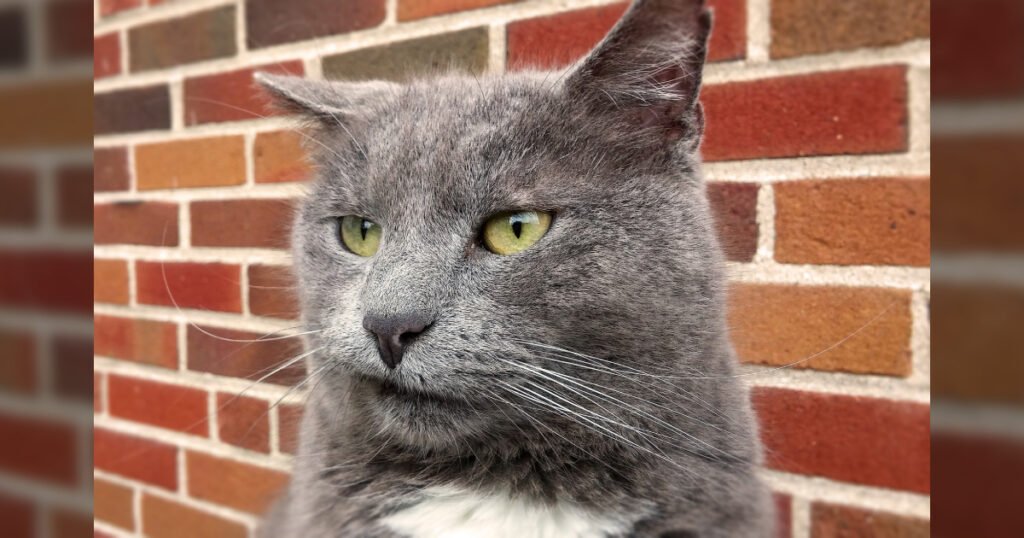The litter pan is a stinky issue no matter what. While cat parents dump fresh litter and scoop on the regular, sometimes even the freshest of setups can’t stop your cat from peeing outside the litter box. But, why do these naturally tidy creatures sometimes opt to eliminate outside the pan?
Cats are naturally coded to seek places they can bury their urine and feces. Yet, issues arise which cause confusion or aversions to the litter box. It’s best to deal with litter pan problems as soon as the issue is recognized. Left unchecked, litter box avoidance can become permanent and lead to soiling in other places in the house.
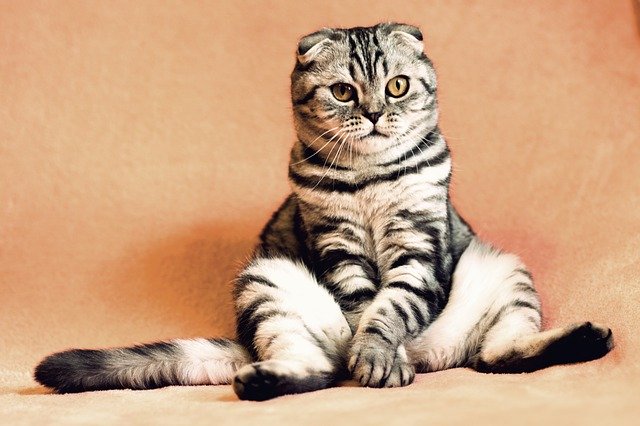
Cat peeing outside the litter box? Time for a chat…
Let’s examine the possibilities behind your cat’s litter box messes.
Reasons for Peeing Outside the Litter Box
Untidy Litter Pan
The first thing to consider when it comes to litter aversion is the cleanliness of the pan. Masters of hygiene, cats are super picky when it comes to where they put their paws. Dirty litter is one place they generally refuse to tread. But driven to cover their output, a dirty box will lead a cat to scratch on the ground outside the litter pan in an effort to fulfill the natural need. If you see this behavior occurring, it might be time to break out the litter scoop.
Dr. Justine A. Lee, DVM, DACVECC, explains, “Some cats will ‘hold it’ and urinate as infrequently as possible to avoid stepping into a dirty, filthy, full litter box.”
A pan not scooped frequently enough will cause a change in your cat’s usage, which could lead to serious medical problems. “Instead of urinating two to three times a day, your cat will tighten up and only go once a day. This makes his urine get more concentrated and could make crystals and urine debris plug up and cause him to get a life-threatening feline urethral obstruction (FUO).
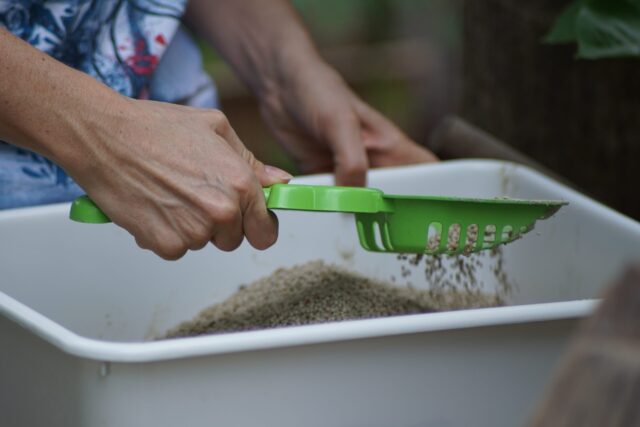
Regular scooping is a must.
Scooping the pan daily, or every other day if you have several pans, helps keeps cats pleased with their potties and reduces the risk of a cat peeing outside the litter box. With some cat litters, like PrettyLitter, offering color-change technology, cat parents will know exactly when a scoop is needed, helping to keep the kitty pan that much cleaner. Frequent scooping and new color-coded litters can also help cat parents identify any arising health issues.
Stress Can Lead to Peeing Outside the Litter Box
Cats don’t handle stress well. They are certainly creatures of habit and any sort of newness can send them into a tizzy. In addition to stressors like moving to a new home or having strangers in the house, feline stress can result from medical issues or territory squabbles as well. Something as simple as moving the litter pan to a new location can even cause stress in a cat.
“When frustration, stress, anxiety, or marking are suspected to be the cause, drug therapy, and behavior modification techniques may be effective,” according to veterinarians Dr. Debra Horwitz and Dr. Gary Landsberg.
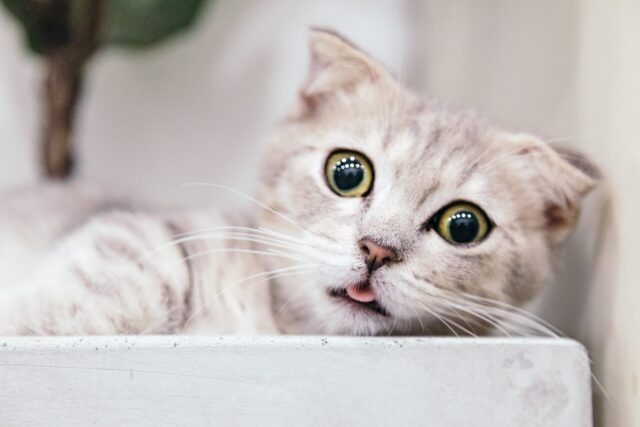
Cats get stressed too.
If your cat is peeing outside the litter box, pay attention to their other habits as well. Watching out for these 6 signs of stress in cats can save everybody from tension in the home.
Litter Pan Location
The location of the litter pan can sometimes lead to aversion issues. As cats need to feel at ease when taking care of nature’s most urgent of business, litter location is key. Cat behaviorist Pam Johnson-Bennett reports a list of considerations for the placement of a litter pan:
- Keep litter boxes away from food spots.
- Place litter pans in places a cat considers convenient but also safe.
- Be sure the box isn’t tucked too far away as to be forgotten but still far enough away not to be noisy.
- Purchase litter pans that are the right size for your cat. A cramped pan can lead to a cat urinating outside the litter pan.
Related: The 11 Best Cat Litter Boxes for the Purrfect Potty Experience
Territory Issues Lead to Messes
While cats seem like placid beasts of comfort, their natural instincts still hold the echoes of their wild past, and, in that wilderness, territory was important. The need for settled territory remains vital to our domesticated cuties of today. Territorial issues tend to rear their head when a new cat is introduced to the family or something else in the current dynamic changes.
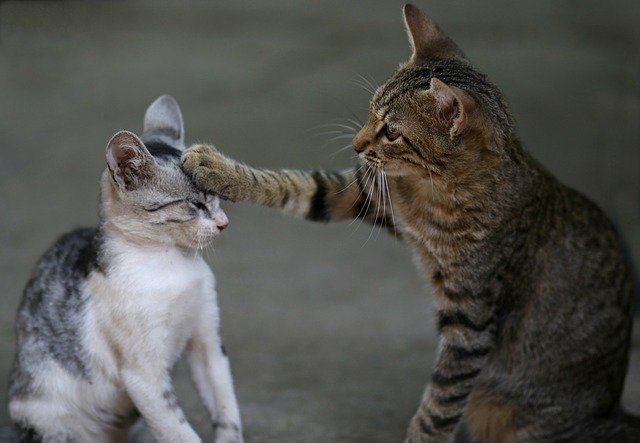
A new furry sibling can upset established territory.
Territory issues typically boil down to one key factor. As explained by the Indoor Pet Initiative of Ohio State University, “The most common cause of conflict between indoor-housed cats is competition for resources.”
And the litter pan is a prime resource. If indoor cats are forced to share one litter pan, someone is most likely going to start messing outside the litter pan as all cats using one pan have no designated elimination territory of their own. Plus, it could also to lead to aggression if one cat starts guarding the litter pan, blocking off another cat’s access to the potty.
The easiest way to fix this issue?
“Treatment for conflict between cats involves providing a separate set of resources for each cat, preferably in locations where the cats can use them without being seen by other cats.”
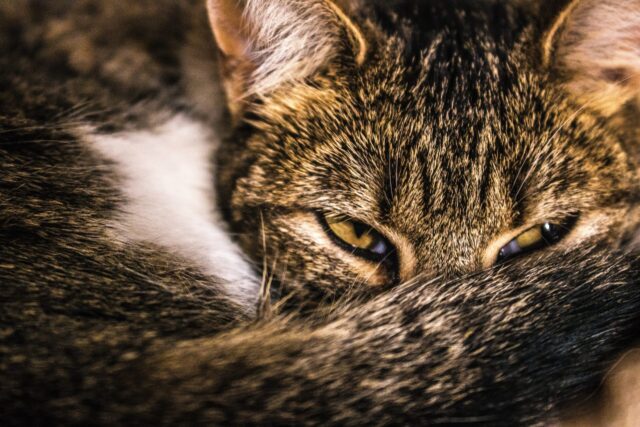
Distance is key in the competition for resources.
When it comes to the litter box and multiple cats, the rule to follow is one litter pan per cat, plus an extra if possible. This gives everyone their own special place to potty, with extra space just in case.
Having multiple litter pans can prevent cats from competing for elimination resources and help them get along peacefully when it comes to using the litter box.
Cats with Sensitive Paws
Some cats may not like the feel of litter on their paws. Just like how some people dislike having sand or dirt on their bare feet, cats can be picky about textures. If your cat stops using the litter box because of the texture of the litter, try experimenting with different brands or materials. Options include traditional clay litter, scooping/clumping litter, crystal-based/silica gel litter, and plant-derived/bio-degradable litter. Cats who don’t like the gritty feel of some litters may prefer plant-derived materials like wheat or corn cob, or even garden dirt or sand. Be cautious when switching brands too frequently, as it may lead to litter box issues.
Health Issues and Litter Box Problems
If the litter box is clean and your cat is still urinating outside of it, there may be underlying health issues. Urinary tract infections, feline idiopathic cystitis, struvite crystals, diabetes, kidney problems, thyroid issues, and aging-related concerns can all lead to cats urinating outside the litter box. It’s important to monitor your cat’s litter box habits and seek veterinary care if necessary.
Finicky Felines
Cats can be picky about their litter boxes as well. They may not like the fragrance of the litter, the height or depth of the box, or other factors. If your cat is having litter box issues, consider if it might be due to your cat’s preferences.
If your cat is peeing outside the litter box, it’s time to connect with your furry friend to understand their world!
Take some time to spend with your cat and observe their behavior. Cats may urinate outside the litter box due to stress, health issues, or territorial marking. By spending quality time with your cat, you can better understand their needs and address any underlying issues causing them to stray from their litter box.

